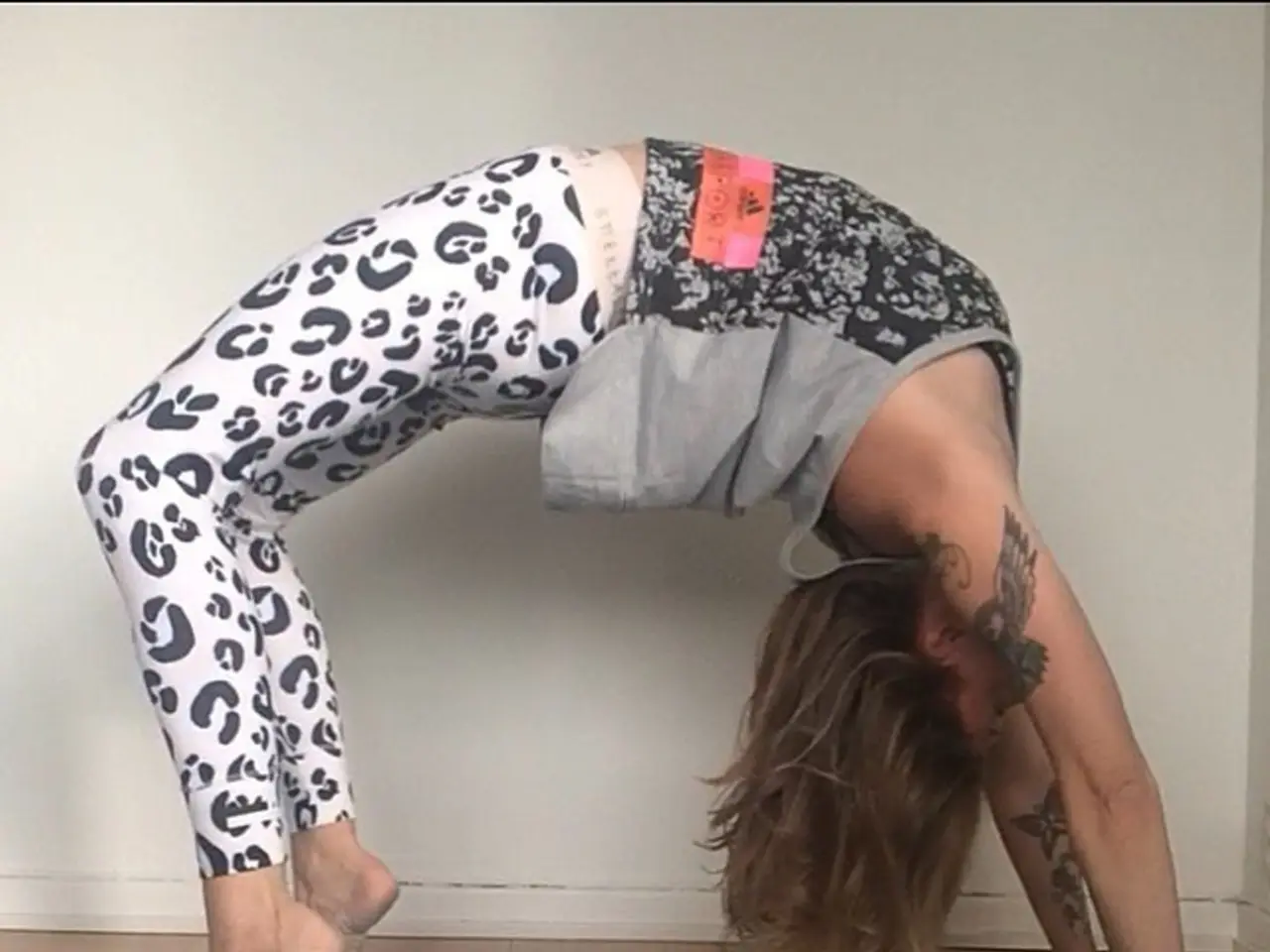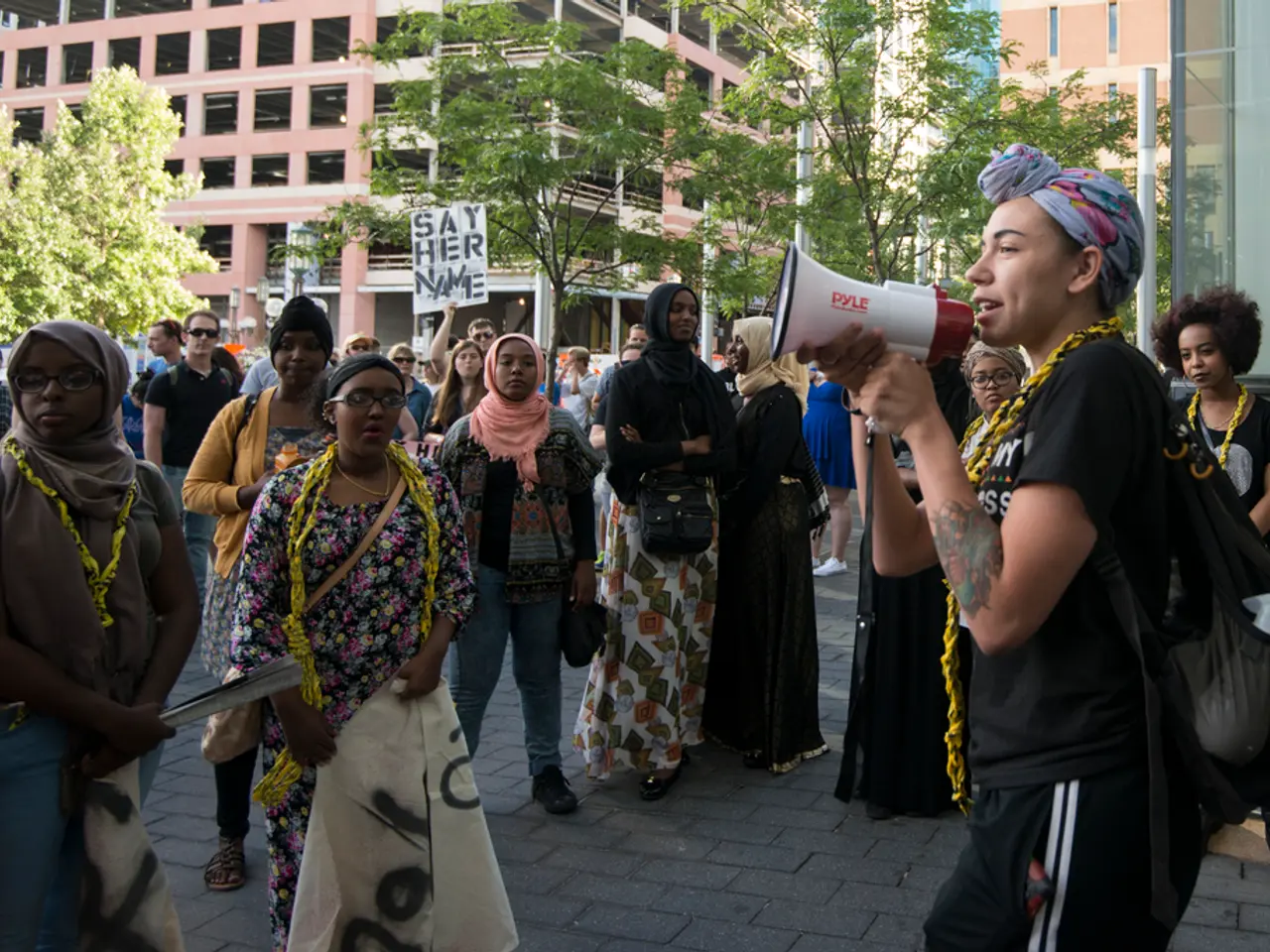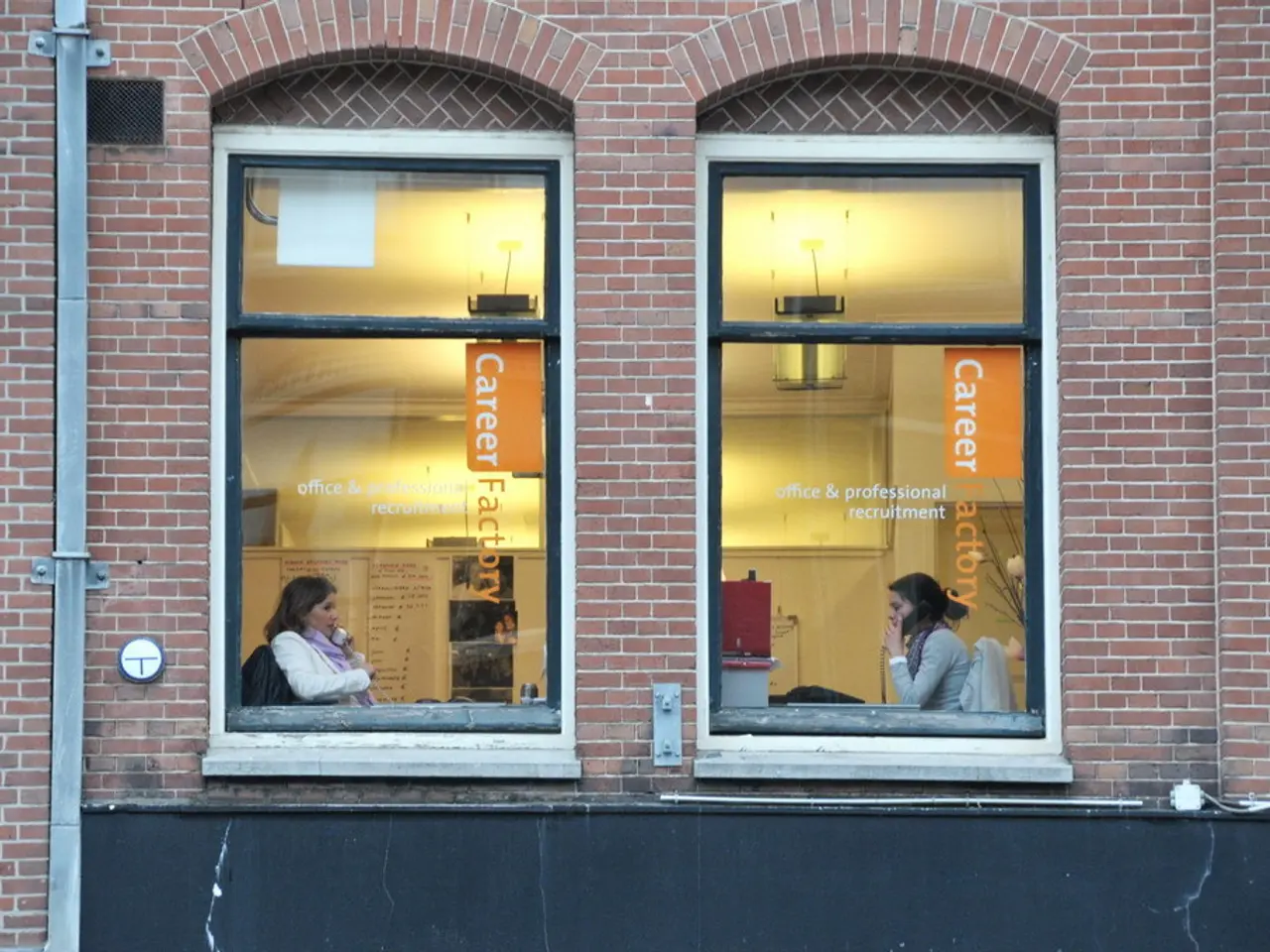Bedtime yoga stretch eases lower back discomfort over a week's practice
The seated forward fold, a simple yoga stretch, has been recommended by physical therapist April Flood as a beneficial exercise for relieving lower back pain, particularly for individuals who sleep on their stomachs. This pose, including variations like the chair forward fold, offers several benefits for lower back pain relief.
### Lower Back Pain Relief
The seated forward fold stretches the lower back and legs, elongating and gently relieving tightness and discomfort in the lower back muscles. Regular practice also helps increase mobility in the spine, easing stiffness often associated with lower back pain.
Moreover, the seated forward fold promotes relaxation and tension release, helping to reduce muscle tension and stress in the lumbar area. This stretch also supports posture and spinal alignment, helping to correct postural imbalances that might contribute to pain, especially important for those whose sleeping posture can misalign the spine.
### Best Timing for Performing Seated Forward Fold
The seated forward fold can be performed at various times throughout the day to provide relief from lower back pain. Doing gentle seated forward folds in the morning can help counteract stiffness from sleeping, especially for stomach sleepers whose lower back may feel tight.
This pose is also easy to perform seated and can relieve back tightness from sedentary habits, common contributors to lower back pain. Performing the stretch before bedtime can relax the back and prepare the body for rest, potentially reducing discomfort overnight.
### Special Considerations for Stomach Sleepers
Stomach sleeping often puts the lower back in an extended “U” shape that increases strain. To alleviate this, stomach sleepers should use a thin pillow for the head and a supportive pillow under hips/abdomen to maintain better lumbar alignment. Incorporating seated forward folds can help stretch and decompress the lower back after sleep and daily activities, easing pressure created by the sleeping posture.
In conclusion, the seated forward fold is beneficial for gently stretching and relieving lower back muscles, improving spinal flexibility, and enhancing posture, making it effective for people who sleep on their stomachs and commonly experience lumbar discomfort. It is best done in the morning, during the day as needed, or before bedtime, often as part of a gentle chair yoga routine.
[1] Flood, A. (2021). Seated Forward Fold for Lower Back Pain Relief. Retrieved from https://www.physioadvisor.co.uk/seated-forward-fold-for-lower-back-pain-relief/ [2] Phelps, J. (2020). Three-Step Seated Forward Fold for Lower Back Pain Relief. Retrieved from https://www.yogajournal.com/practice/three-step-seated-forward-fold-for-lower-back-pain-relief [3] Flood, A. (2019). The Benefits of Seated Forward Fold for Lower Back Pain. Retrieved from https://www.healthline.com/health/seated-forward-fold-for-lower-back-pain [4] Flood, A. (2018). Seated Forward Fold for Stomach Sleepers. Retrieved from https://www.healthline.com/health/seated-forward-fold-for-stomach-sleepers
- The science of health-and-wellness demonstrates that the seated forward fold, often used in yoga practice, fosters flexibility and relaxation, providing wellness benefits for individuals who sleep on their stomachs by alleviating lower back pain.
- April Flood, a physical therapist, suggests incorporating this yoga pose, with variations like the chair forward fold, into a fitness-and-exercise routine for flexibility, tension release, posture support, and spinal alignment improvement, all of which aid in reducing lower back pain.
- By promoting flexibility, muscle relaxation, and posture correction, the seated forward fold contributes to the overall health-and-wellness of individuals, serving as an effective exercise that supports wellness, yoga, fitness-and-exercise, and science-backed pain relief strategies.




